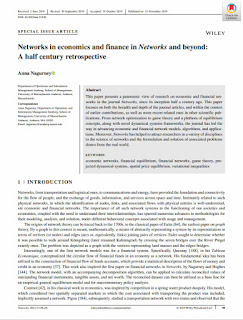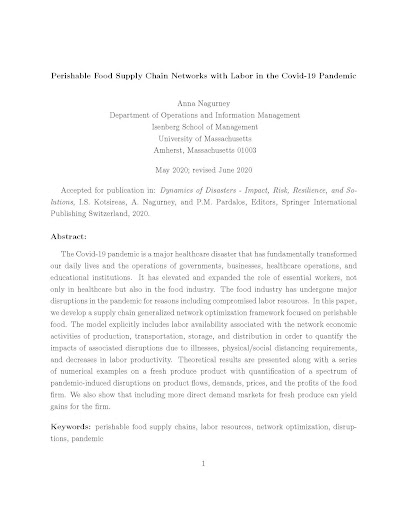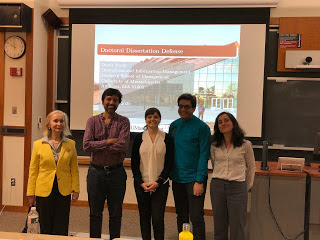In the pandemic, a positive feature has been the number of excellent journalists that I have had the pleasure to interact with through interviews. The writings of journalists and their investigative journalism have kept us informed as new information becomes available at, sometimes, an incredibly rapid pace. Journalists are challenged now for so many reasons, including their personal safety and I thank them for their work ethic, their outreach, and their attention to digging deep.
Honestly, one of the highlights in this pandemic is the numerous conversations that I have had with journalists, some lasting for an hour or more. I have also very much enjoyed being interviewed for several radio programs, both in the US and in England, and have enjoyed being on TV news programs in Boston and in Dallas. The intelligence of the journalists and their thoughtful questions keep this academic intellectually engaged on many dimensions. Sometimes the interviews even end with laughter and it is clear that a real connection has been made. Also, as an educator, I believe that we can play an important role, especially if our expertise is relevant, to helping journalists and the media, in general, get the important news out in the pandemic, whether it involves, for example, product shortages due to supply chain disruptions, challenges associated with the cold chains needed for the Covid-19 vaccines, and many logistical issues surrounding the distribution of the vaccines, as well as technological innovations in the vaccine cold chain. Recently, the professional society of INFORMS, which has over 11,000 members had its virtual conference, and I was interviewed by Glenn Wegryn on my experiences with the media in the pandemic. You can view it on youtube.
In my previous blogpost, I wrote about the vaccine cold chain and noted several informative articles, including the fascinating one by Lori Hinnant in the Associated Press on challenges of the vaccine cold chain in developing countries and even the CareTalk podcast that I was honored to be a guest on.
When responding to inquiries from journalists and the media, one has to be ready, since often (but not always), they are on a tight timeline (and this is especially evident in the pandemic). I have received quite a few messages from journalists in my email marked URGENT in the subject line.
A while back I was interviewed by Charlie Slack, for the excellent article, "The pandemic offers valuable lessons that can help you compete in the months and years ahead," for the Bank of America, which is part of a series. I also thoroughly enjoyed speaking with Jeff Reinke for his article published on manufacturing.net (which has been reprinted on other outlets), "Vaccine poses immense, unprecedented distribution challenges." Jeff's knowledge of logistics is vast - honestly, I could have spoken with him for hours!
I also very much enjoyed speaking with Michael Goldstein for his superb article in Forbes, "Covid-19 vaccines are here: Are airlines ready to transport them" which presciently anticipated the big news today about Pfizer's vaccine being air shipped from Belgium to the US yesterday via United cargo!
And, I hope that all of you who celebrated Thanksgiving had a pleasant, festive day! Just before the holiday I was contacted again by a Senior Technical Writer for USA Today, Jessica Guynn, who had interviewed me a few months ago, and her latest article on product shortages, including that of, yes, here we go again, toilet paper (if you read it to the end it may make you smile). I was laughing out loud, having been reminded of summers spent at scouting camps; sleeping in a tent, and having access to very limited shower (cold water only) and bathroom facilities (outhouses).
It was a pleasure to speak with Karen Pallarito, whose article, "This is why the COVID-19 vaccine is going to take longer than you think," published on Livestrong.com.
I would also like to thank Kim Severson, a journalist for The New York Times, who had interviewed me for an article on food, "7 ways the pandemic has changed the way that we shop for food," that was published in early September. The article was very well researched and insightful. It was special to speak with Katie Surma of The Chicago Tribune for her article, "Chicago-area grocers stock up as COVID-19 cases rise.
And, as for technological innovations, Jared S. Hopkins of The Wall Street Journal, who has been writing very timely articles on the vaccine rollout, interviewed me for an article on new vials developed by Corning, that can enhance the storage and transport of the Covid-19 vaccines.
I had mentioned earlier in this blogpost that one had to be ready to respond to media inquiries. For example, I was contacted by BBC radio recently in the early afternoon for a live segment for the Colin Murray show, which took place at 5:30ET (but 10:30PM UK time). Since I had been a Visiting Fellow at All Souls College at the University of Oxford in England, I am quite good at parsing different British accents and our conversation, I believe, was terrific.
I would also like to single out and thank Larry Collins, another award-winning journalist with whom I have had the pleasure and honor of speaking in the pandemic for the news segment, "COVID-19 vaccine distribution, shipping present challenges." The TV news segment from Dallas can be accessed here. Larry is a fabulous interviewer!
It is important to add that not every interview that one might do results in quotes. Nevertheless, I have gotten thanks from two journalists for educating them and several have told me that they wish that they had majored in operations and logistics and college, so I consider this a success.
And for those of you who are interested in reading and learning more, INFORMS maintains regular updates on its members on its website, who have appeared in the media, and who have been interviewed on various pandemic topics, including healthcare and supply chains. This is an excellent, very valuable service.





























































